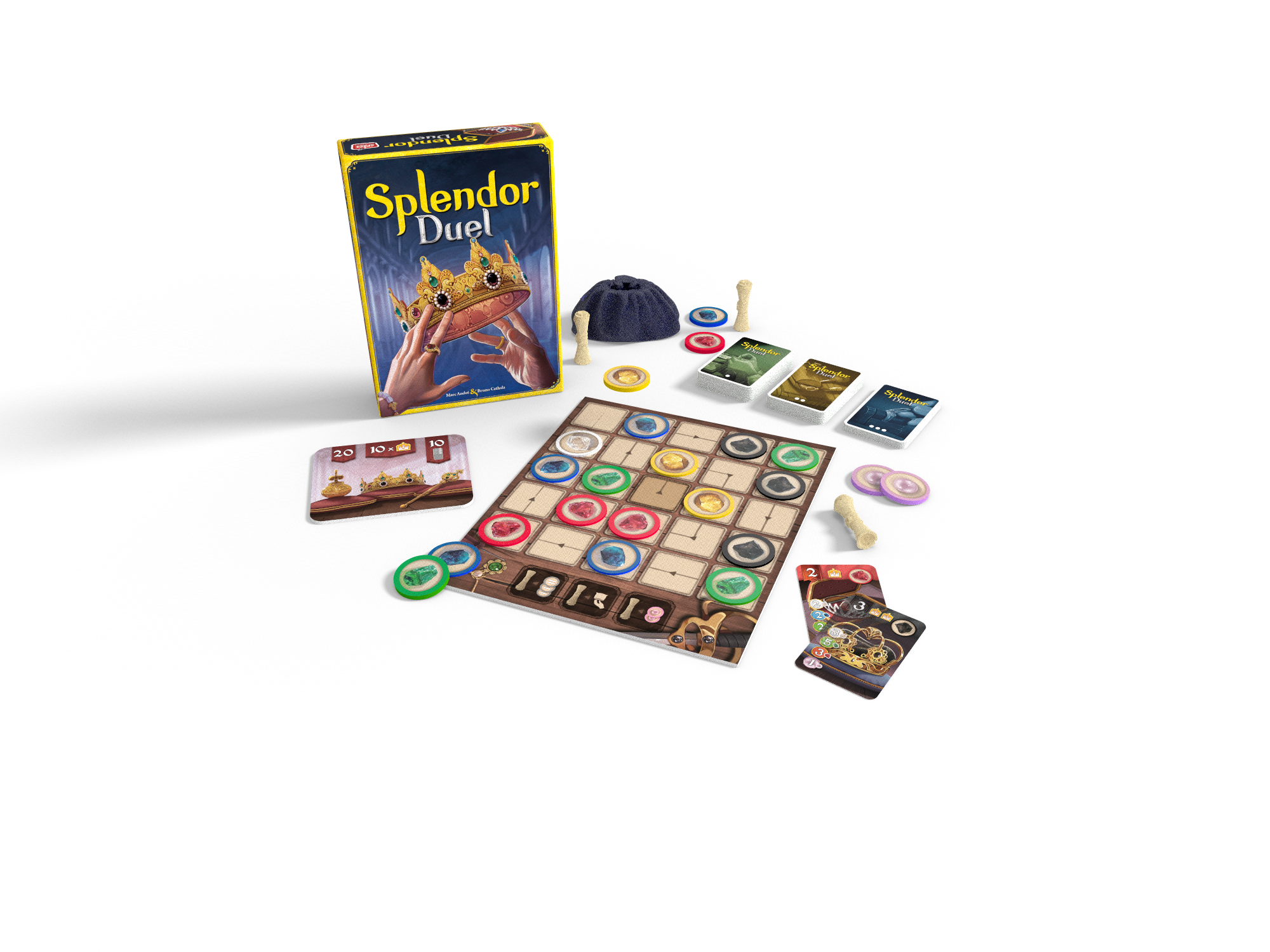16 August 2024
|
Splendor is a classic board game, but does the Splendor Duel variant live up to high expectations? Well, yes it does!
Written by Charlie Pettit
I’m about to say something controversial – and that’s that I prefer Splendor Duel to Splendor. There’s definitely been a load of new Duel games over the last two years or so, but I reckon this one is a real cracker. Whether you’ve played Splendor before though – which of course from that statement, I have – or have never touched it, I think it’s a fantastic game for two players, that absolutely earns its place on your shelf.
What is Splendor?
Let’s do an overview. Splendor is a game of competing jewel merchants. You’re going to collect jewels, use those to then purchase cards, which offer things like points, crowns, or a permanent stone, meaning your next purchase will need one less of that jewel (or a combination of those options). You win by getting enough points. Easy enough, right?

What is Splendor Duel?
Splendor Duel takes this core gameplay and refines it. Instead of a “select whatever gem you like” from a stack, you get a small fold out board, which you place gems onto. To pick up your gems, they have to be in a row – vertical, horizontal, or diagonal – and when you replenish them, you fill in the gaps in a spiral form. That forces people to pick up a wider range of colours, and also talks people into using the tiles they may not use as often.
But where it gets really interesting, is that every time a player does something that might put them at an advantage, the other player gets to take a privilege token. For example, if you take two pearl tokens, I get a privilege token. If I replenish the board, you get one. If you manage to pick up three tokens of the same colour, I get one. And that privilege token means that before my turn, I can spend the token to pick up a gem of any colour from the board. I then take my turn as normal. This can be a real game changer.

As resources are a bit more controlled and a bit harder to take exact gems, it feels much more of a head-to-head than simply playing your own board with limited interactions. Sure, you still play to your own board, it’s still your decisions, but now those overlap a lot more. You may have taken the gems that I want, preventing me from getting a full row of three that I wanted – but I’m going to use my privilege tokens to be able to take what I need, and I’m going to steal a token from you using a bonus on a card I subsequently buy.
You also win in more ways now – you can collect the required points, or collect half as many in one single colour. It may not sound like a lot, but if you play a few times with the same person, you’ll find that switching up what you’re aiming for can throw them off a bit. Now you’re ducking and diving, trying to be nonchalant about which cards you’re going for, lest your opponent notice…
Related article: Looking for more 2 player games? Try this list...
Splendor Duel Review
Here’s the thing – Splendor is a great game, so it’s absolutely no wonder that Splendor Duel is one too. It’s really pretty, it’s really satisfying, it’s really interesting to play. If you can get the hang of explaining it easily, it’s a great gateway game too, because you don’t realise how much you’ve learnt and enjoyed until the game ends and you realise you want to play again. Splendor Duel has the benefit of time. It knows the bits we like about Splendor, it knows the bits that could be a bit more focussed, and it acts accordingly. As a result, I’d actually love to see Splendor Duel evolve into a new Splendor. That won’t happen – they’ve released a new artwork version recently – but if ever I get two Splendor Duel copies in one place, I wonder if we could make a larger player count version…
Obviously my rating for this is glowing – you should absolutely play it. Especially if you’ve played Splendor before, but if not, if you like something like Azul or Patchwork, you’ll enjoy this. And, if you don’t play anything at all, you could very happily start here.
Check out our video on the set up and how to play!
What's on the box?
Designer: Marc André, Bruno Cathala
Publisher: Space Cowboys
Time: 30 minutes
Players: 2
Age: 10+
Price: £24







